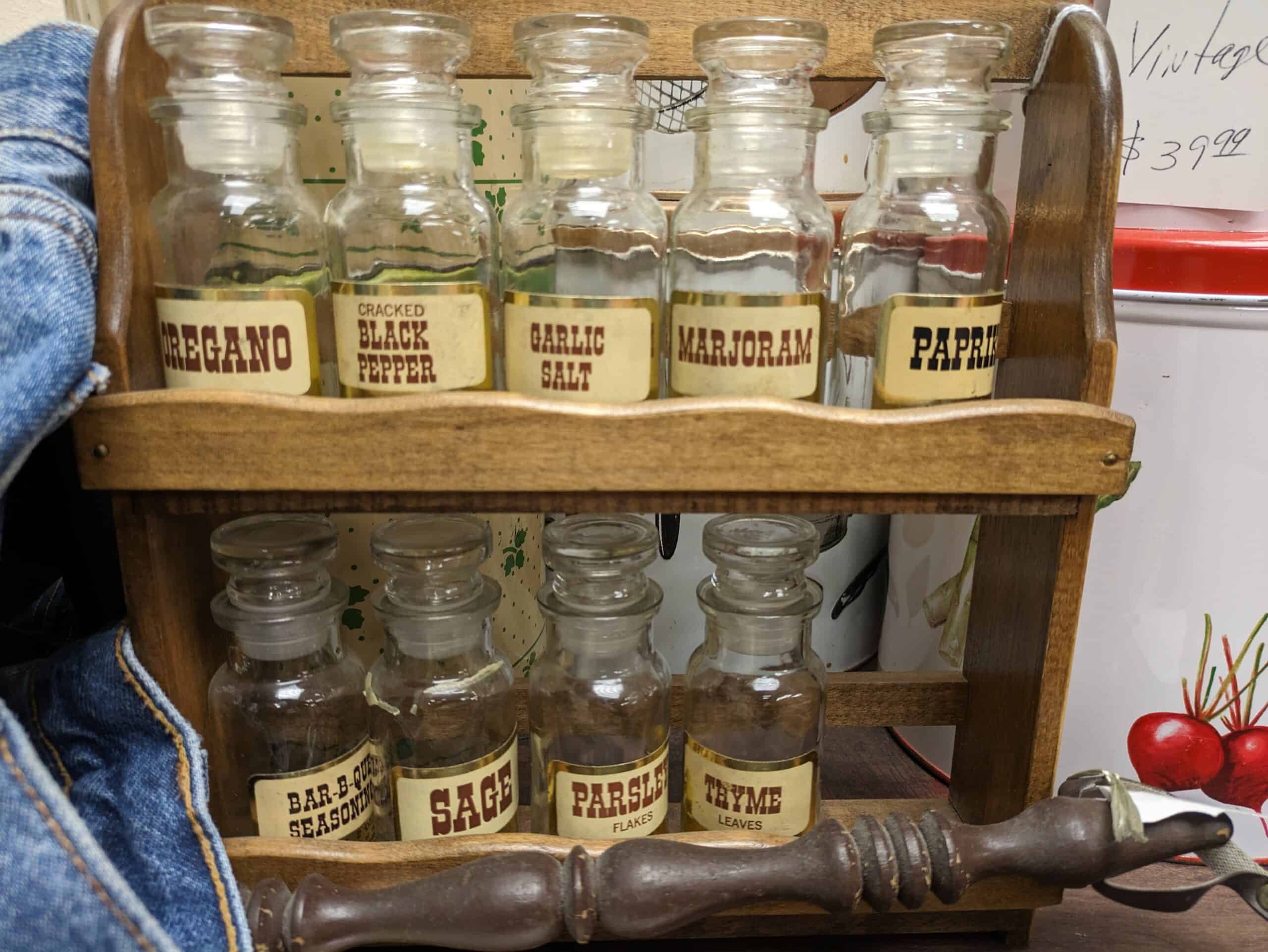Carnivorous plants have captivated enthusiasts for centuries with their unique adaptations and fascinating feeding mechanisms. These extraordinary plants have evolved to trap and digest insects and other small creatures, thriving in nutrient-poor environments where other plants struggle. From the iconic Venus Flytrap to the exotic Monkey Cup, each species offers a glimpse into the incredible diversity of nature. This list highlights some of the most coveted carnivorous plants for collectors, showcasing their distinct characteristics and the intriguing ways they capture their prey.
Venus Flytrap (Dionaea muscipula)

The Venus Flytrap is arguably the most famous carnivorous plant, known for its jaw-like leaves that snap shut on unsuspecting insects. Native to the subtropical wetlands of the East Coast of the United States, this plant thrives in nutrient-poor soil. Each trap can only close a few times before dying off, making every catch significant. Flytraps require a lot of sunlight and distilled water to mimic their natural habitat. Enthusiasts appreciate the Venus Flytrap for its dramatic and rapid movement.
Pitcher Plant (Nepenthes)
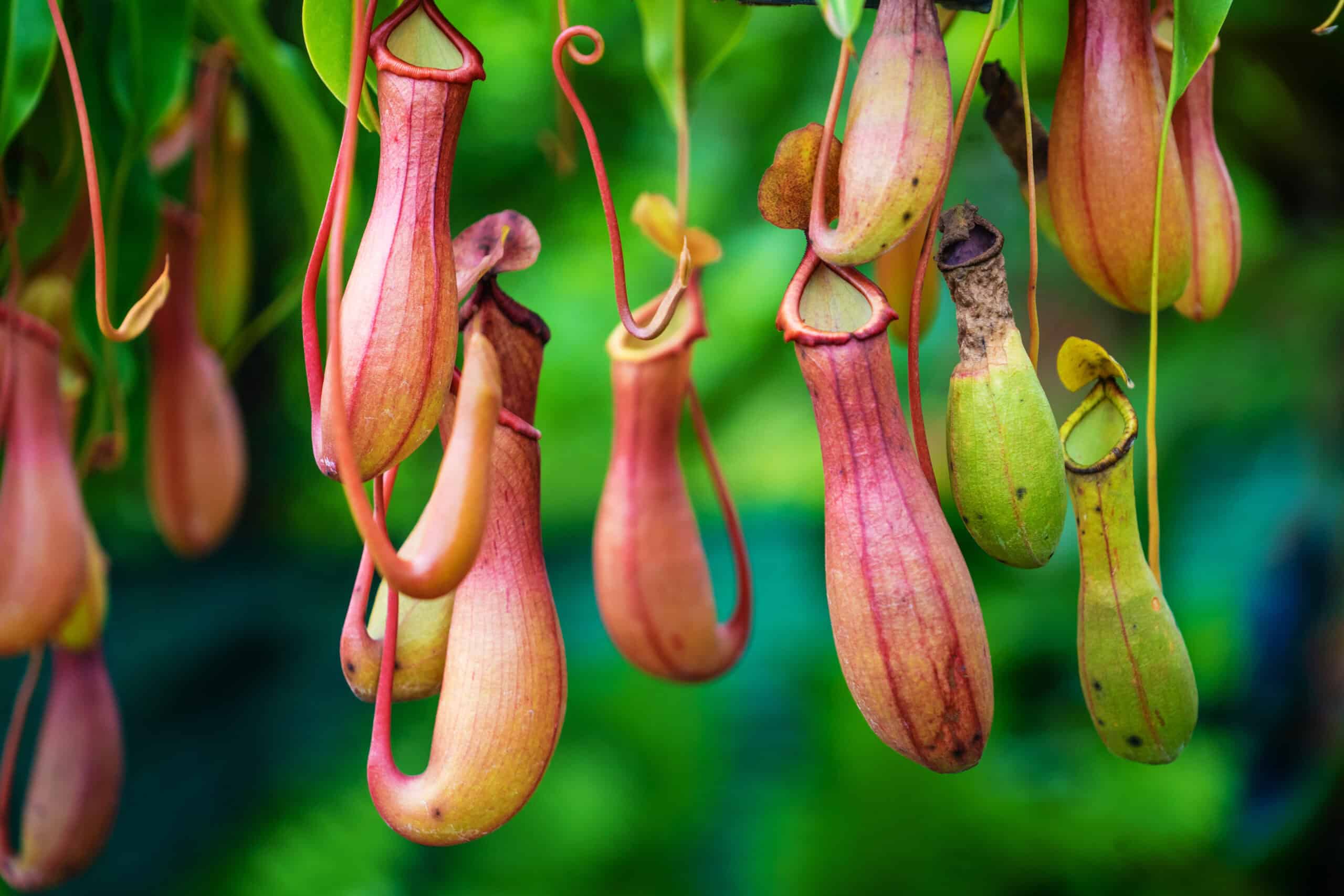
Pitcher Plants are tropical beauties with deep, pitfall traps that lure insects with their nectar. The inner walls of the pitchers are slippery, causing prey to fall into a pool of digestive enzymes at the bottom. They are found in diverse habitats ranging from rainforests to alpine regions. These plants come in various shapes and sizes, with some pitchers growing up to a foot long. Collectors prize them for their exotic appearance and fascinating feeding mechanism.
Sundew (Drosera)
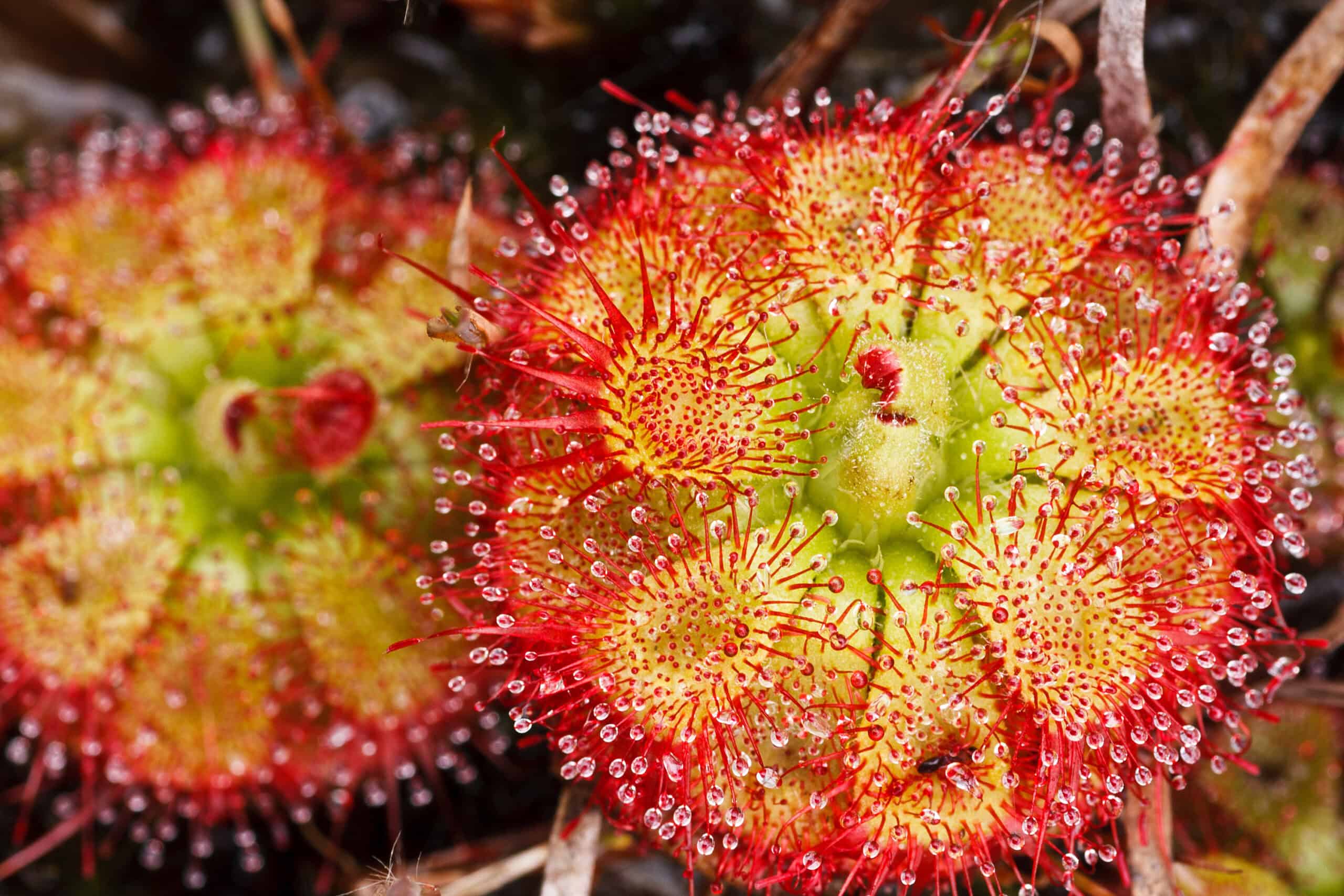
Sundews are captivating with their glistening, sticky tentacles that ensnare insects. When an insect lands on a tentacle, it gets stuck in the mucilage and is slowly digested by the plant. There are over 200 species of Sundews, ranging from tiny rosettes to tall, upright plants. They are found on every continent except Antarctica, showcasing their incredible adaptability. Sundews are cherished for their jewel-like appearance and efficient trapping method.
Butterwort (Pinguicula)
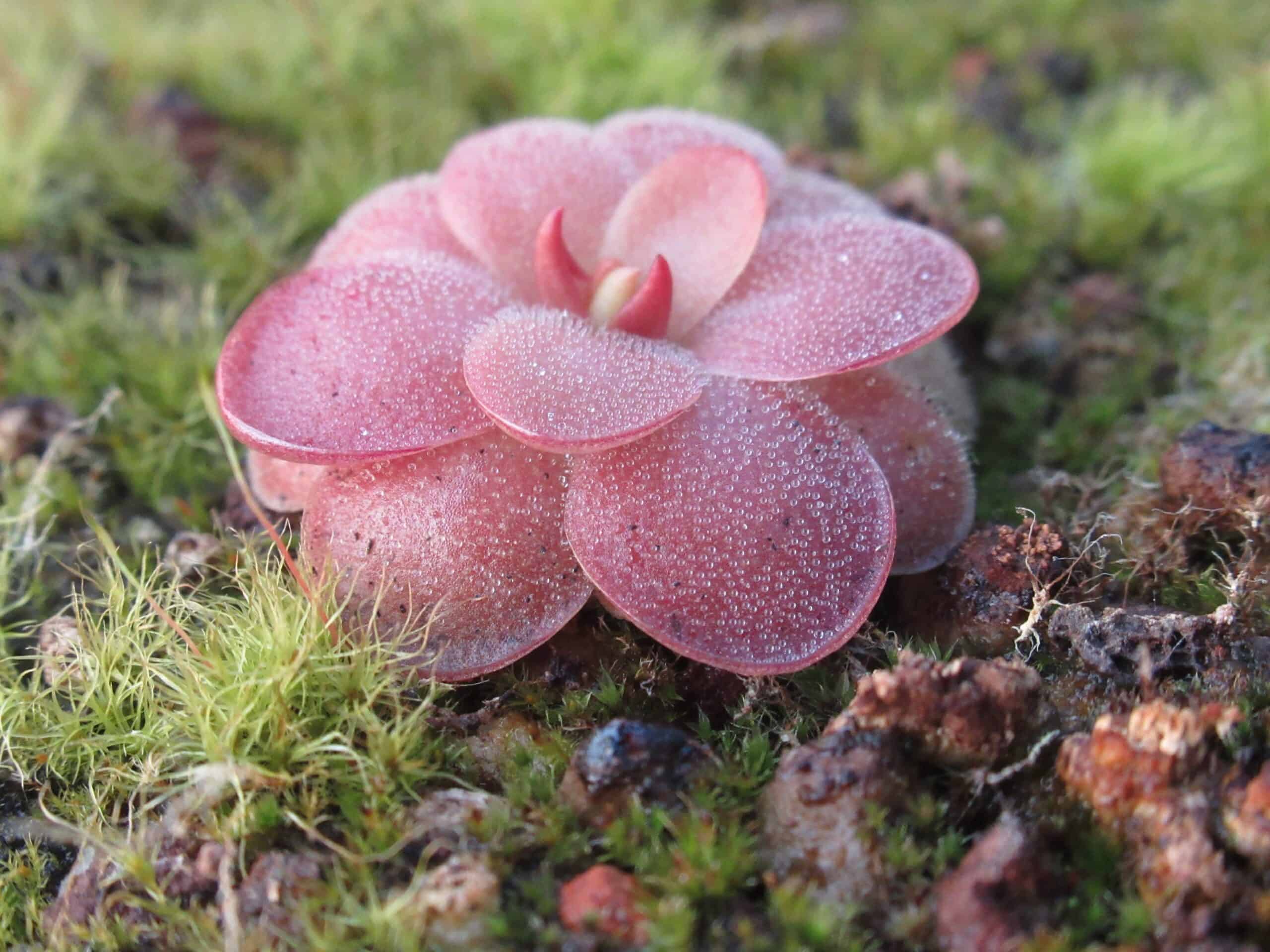
Butterworts attract insects with their bright, greasy leaves that look like butter, hence the name. The leaves secrete a sticky substance that traps and digests the prey. These plants are often found in limestone regions and require high humidity to thrive. Butterworts are particularly valued for their beautiful flowers, which can be white, pink, or purple. Enthusiasts enjoy their dual role as both carnivorous plants and ornamental flowers.
Bladderwort (Utricularia)
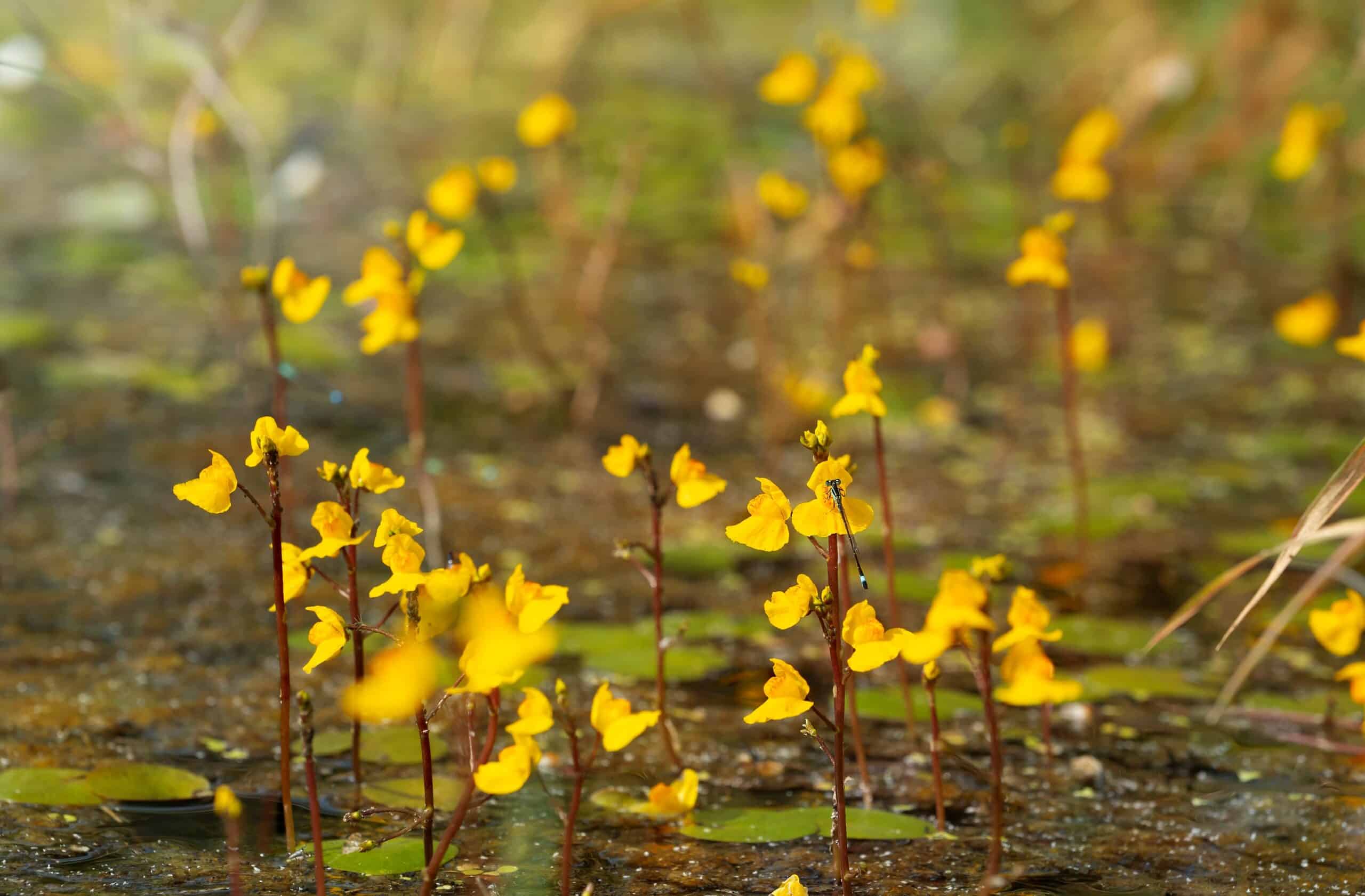
Bladderworts are unique in that they use tiny bladder-like traps to capture and digest small aquatic or soil-dwelling organisms. These bladders create a vacuum that sucks in prey when triggered. Found in a variety of environments, from freshwater lakes to moist soils, they are one of the most widespread and diverse genera of carnivorous plants. Bladderworts are admired for their complex trapping mechanism and delicate, often colorful flowers.
Cobra Lily (Darlingtonia californica)
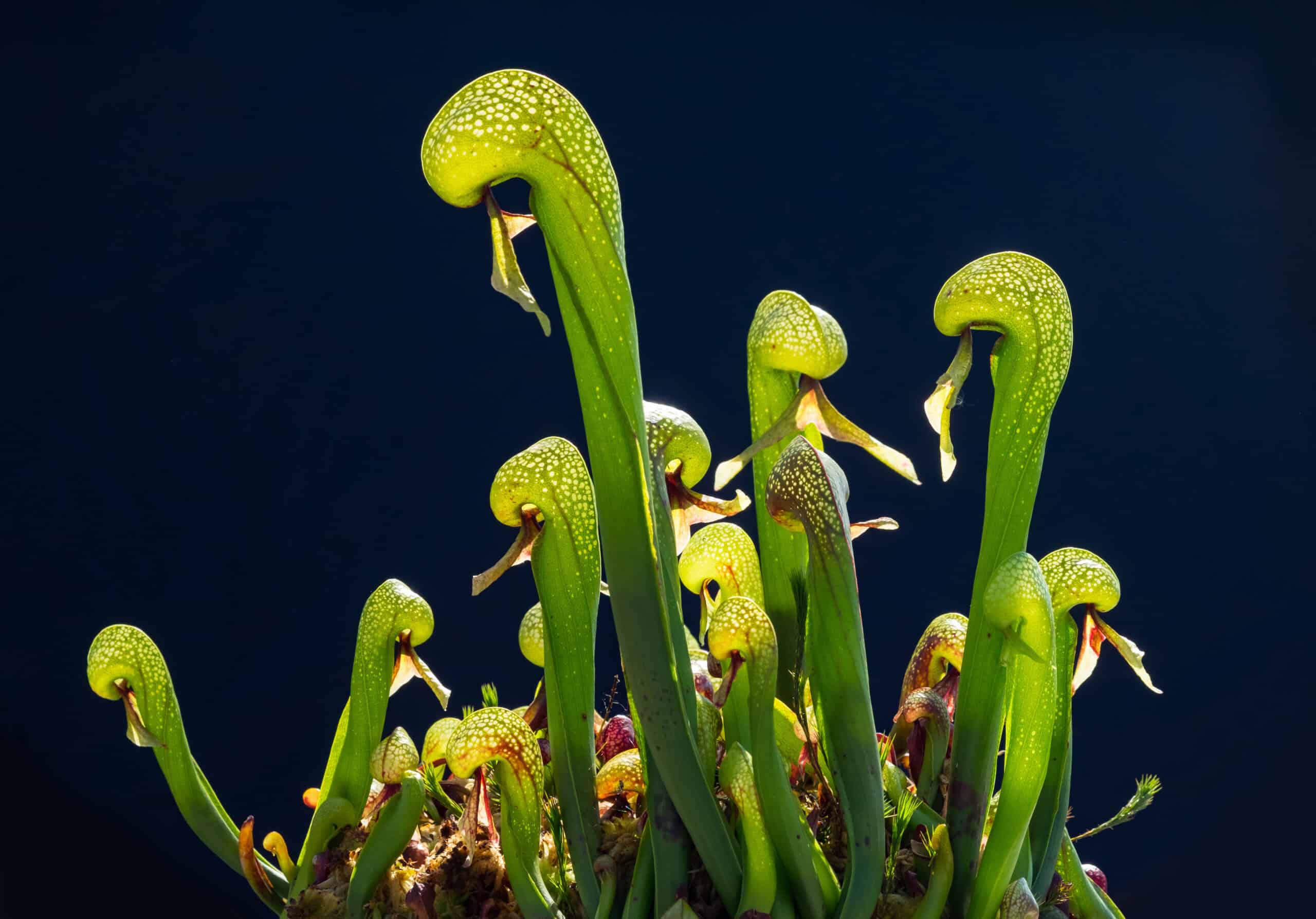
Native to Northern California and Oregon, the Cobra Lily is named for its hooded, cobra-like appearance. Its tubular leaves form a twisted maze that confuses insects, leading them deeper into the trap where they eventually drown in digestive fluids. Unlike most carnivorous plants, Cobra Lilies do not produce their own digestive enzymes but rely on symbiotic bacteria. They thrive in cool, running water, making them a bit challenging to grow. Collectors find the Cobra Lily intriguing for its unique trapping strategy and striking appearance.
Tropical Pitcher Plant (Nepenthes rajah)
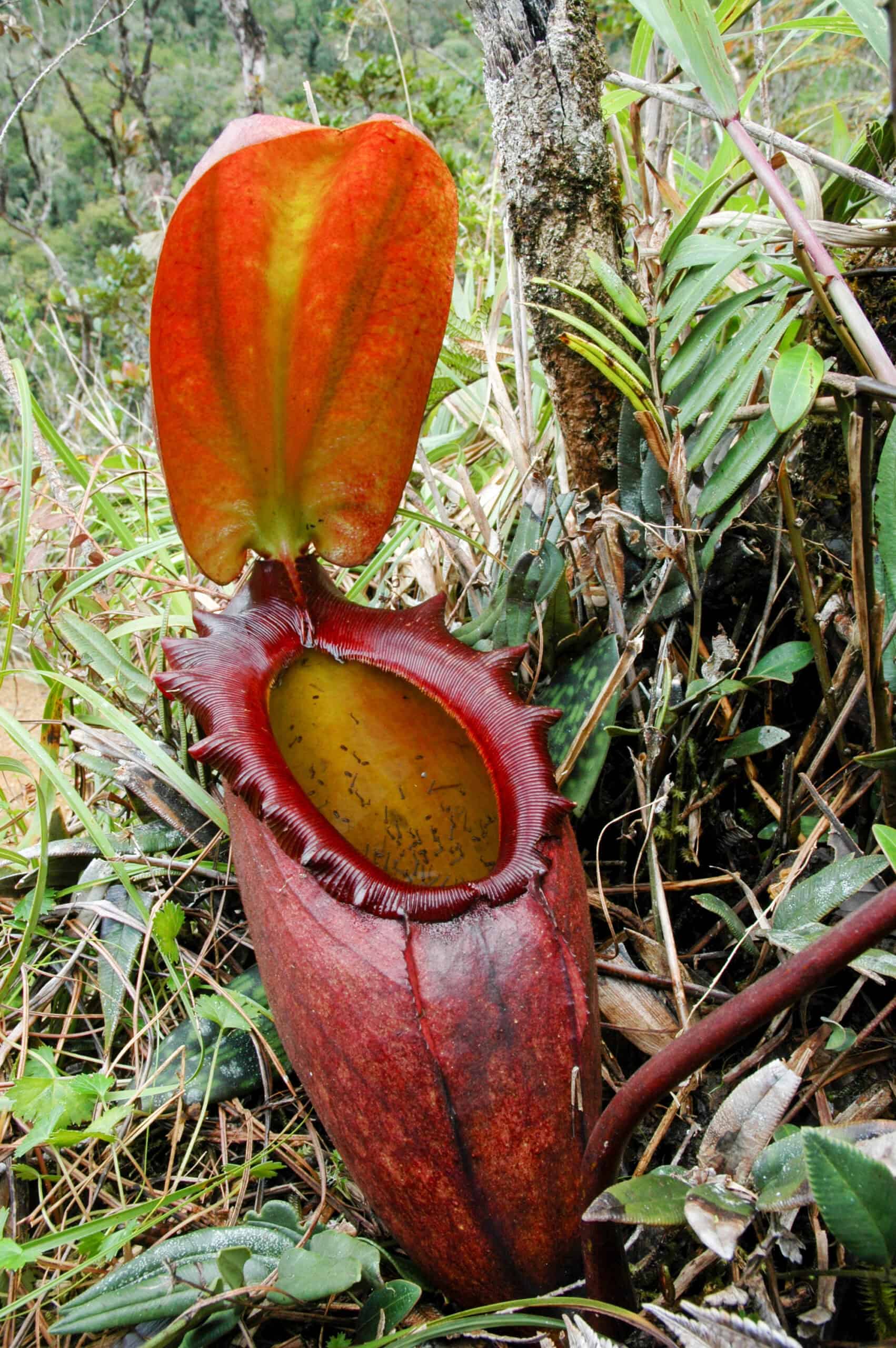
Nepenthes rajah, one of the largest carnivorous plants, boasts enormous pitchers that can hold up to three liters of liquid. This plant is native to the Borneo highlands and captures not only insects but occasionally small vertebrates. Its pitchers are often brightly colored, attracting a wide range of prey. The plant’s size and exotic beauty make it a coveted addition to any carnivorous plant collection. Enthusiasts are particularly drawn to its impressive size and ability to trap larger prey.
Albany Pitcher Plant (Cephalotus follicularis)
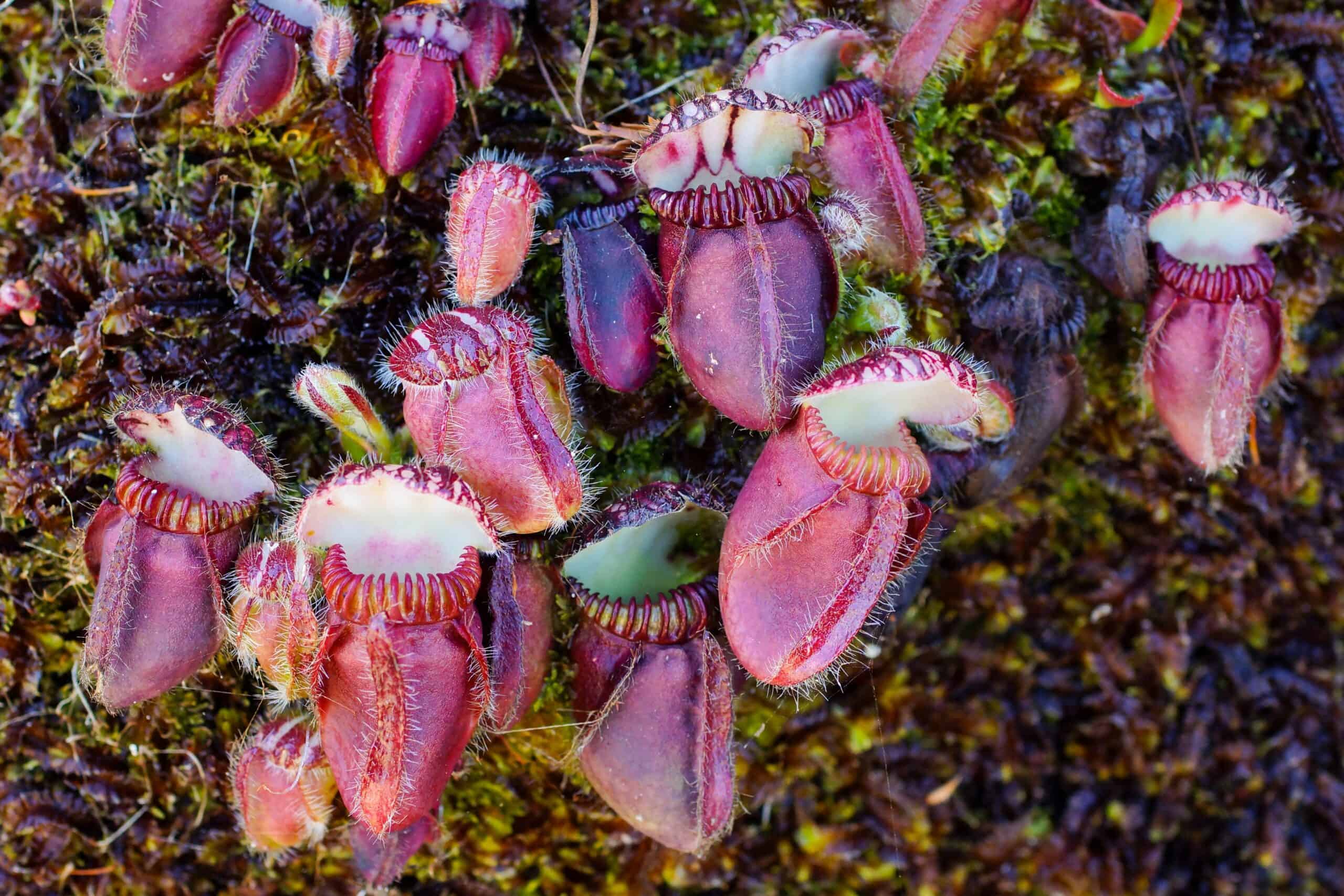
The Albany Pitcher Plant, native to southwestern Australia, is a small but highly specialized carnivorous plant. Its pitchers are filled with digestive fluids and lined with slippery walls to ensure prey cannot escape. This plant thrives in nutrient-poor, sandy soils and requires careful watering to avoid root rot. The intricate design and fascinating trapping mechanism make it a favorite among collectors. Its compact size and unique habitat requirements add to its appeal.
Monkey Cup (Nepenthes rafflesiana)
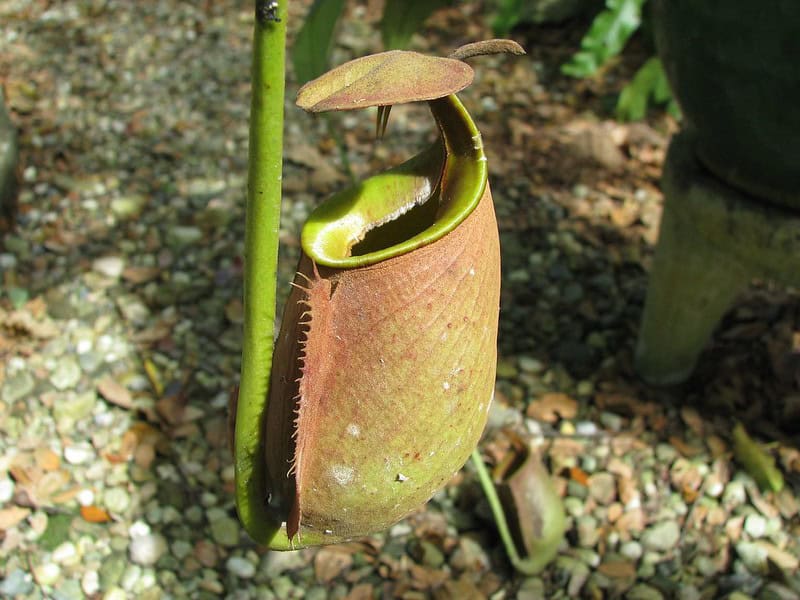
Named after the monkeys that have been observed drinking rainwater from its pitchers, the Monkey Cup is a versatile carnivorous plant. Its large, colorful pitchers attract and trap a variety of insects and other small creatures. Found in the rainforests of Southeast Asia, it prefers humid conditions and plenty of sunlight. The plant’s ability to adapt to different environments makes it popular among both novice and experienced growers. Enthusiasts appreciate its robust trapping method and vibrant appearance.
Parrot Pitcher Plant (Sarracenia psittacina)

The Parrot Pitcher Plant, native to the southeastern United States, has distinctive, parrot-beak shaped pitchers. These pitchers lie flat against the ground, trapping insects in a pool of digestive enzymes. It thrives in wet, boggy areas and requires full sunlight to maintain its vibrant colors. The plant’s unique shape and effective trapping method make it a standout in any collection. Collectors value it for its aesthetic appeal and efficient predatory behavior.
Roridula (Roridula gorgonias)
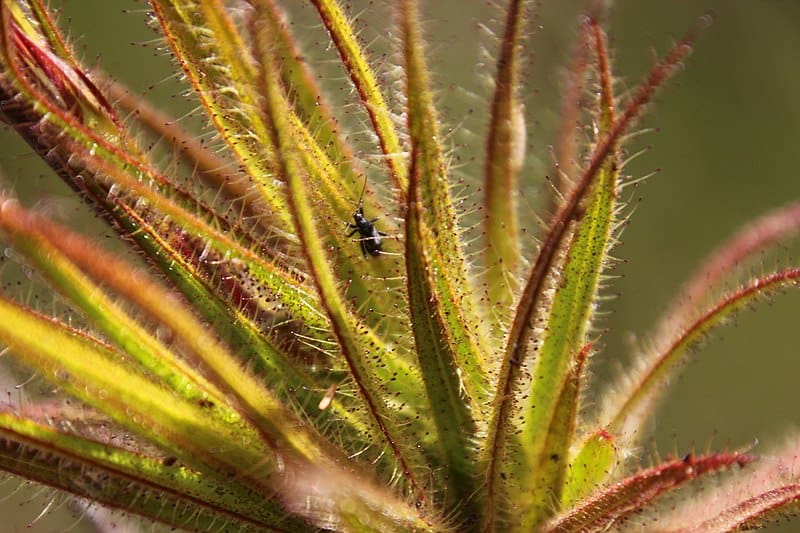
Unlike most carnivorous plants, Roridula relies on symbiotic relationships with bugs called Pameridea roridulae to digest its prey. The plant traps insects with its sticky leaves, but instead of digesting them directly, it relies on these bugs to break down the prey and excrete nutrient-rich waste that the plant absorbs. Found in South Africa, Roridula requires very specific growing conditions, including high light levels and well-draining soil. Its unique digestive strategy and ecological niche make it a fascinating addition to any collection. Collectors appreciate its intricate relationship with insects and its unusual feeding method.
Byblis (Byblis liniflora)
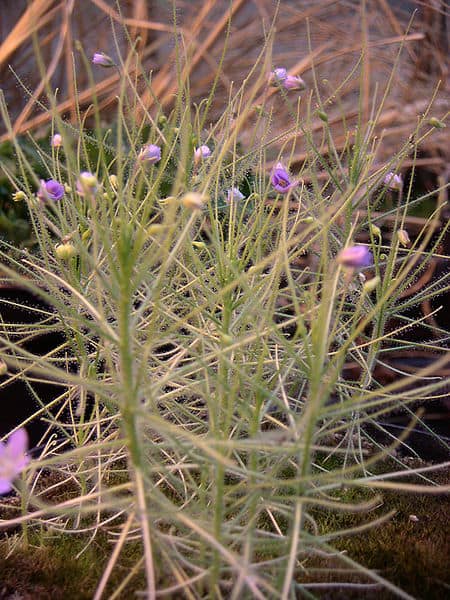
Also known as the Rainbow Plant, Byblis is adorned with glandular hairs that glisten in the sunlight, attracting and trapping insects. Native to Australia, it grows in sandy, nutrient-poor soils and requires high humidity and plenty of sunlight. The plant’s delicate flowers, which range in color from white to deep purple, add to its allure. Its beautiful, dew-covered leaves and efficient trapping mechanism make it a sought-after species. Enthusiasts value Byblis for its aesthetic appeal and unique growing requirements.
Heliamphora (Heliamphora nutans)
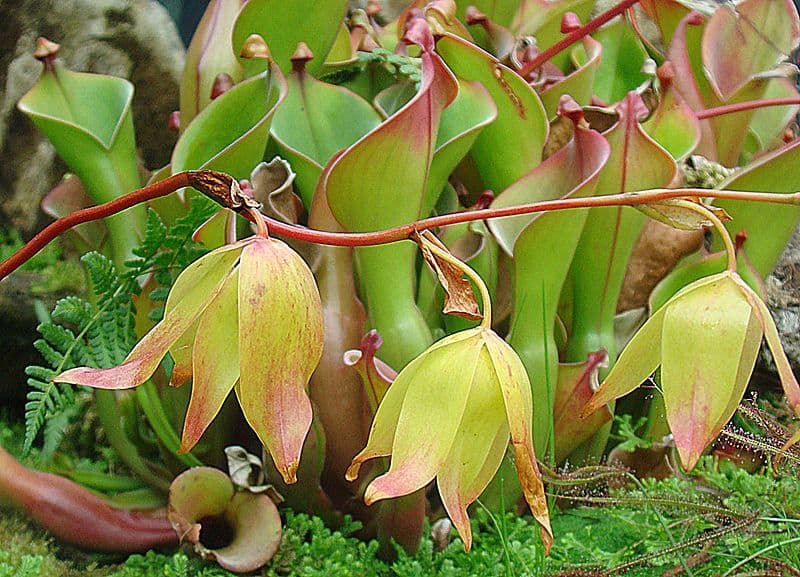
Heliamphora, or Sun Pitchers, are native to the highlands of South America and are known for their tall, slender pitchers that capture rainwater and insects. These plants thrive in cool, humid environments with plenty of indirect sunlight. The pitchers have a nectar-secreting lid that attracts prey, which then drowns in the water-filled traps. Their striking, elongated pitchers and specific habitat needs make them a prized addition to any collection. Collectors are drawn to their graceful form and effective predatory capabilities.
Genlisea (Genlisea violacea)
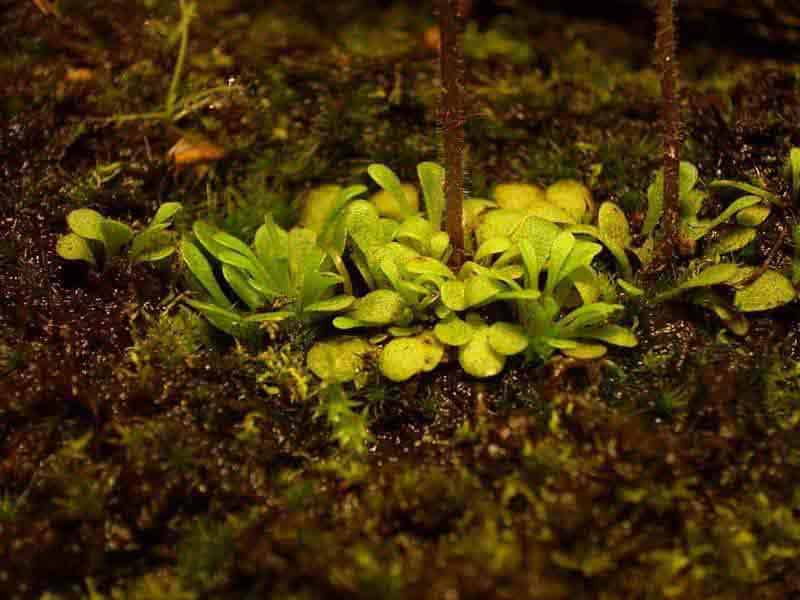
Genlisea, also known as the Corkscrew Plant, captures prey through subterranean traps that resemble corkscrews. These traps lure in protozoa and other microscopic organisms, which are then digested for nutrients. Native to tropical regions of Africa and South America, Genlisea requires moist, sandy soils and plenty of light. Its unique underground trapping mechanism and delicate flowers make it a fascinating subject for enthusiasts. The Corkscrew Plant is particularly valued for its unusual predatory strategy and intricate design.
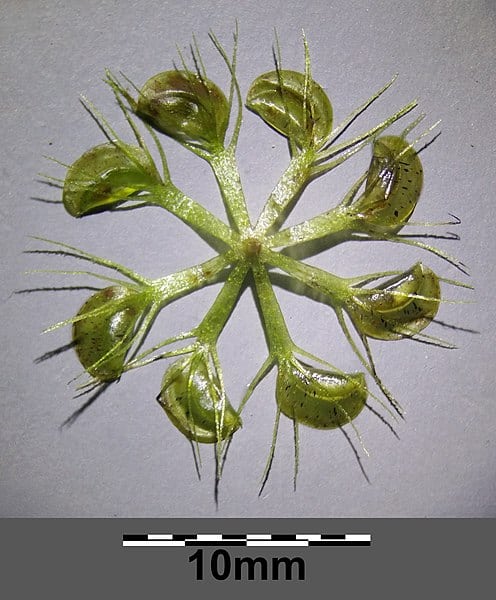
Commonly known as the Waterwheel Plant, Aldrovanda is an aquatic carnivorous plant that traps prey using snapping traps similar to those of the Venus Flytrap. These traps close rapidly on small aquatic organisms, making it an efficient predator. Found in nutrient-poor freshwater environments across Europe, Asia, Africa, and Australia, it requires clean, acidic water and plenty of sunlight. The Waterwheel Plant’s rapid movement and aquatic habitat make it a unique and captivating species. Enthusiasts are drawn to its dynamic trapping mechanism and floating lifestyle.
Brocchinia (Brocchinia reducta)
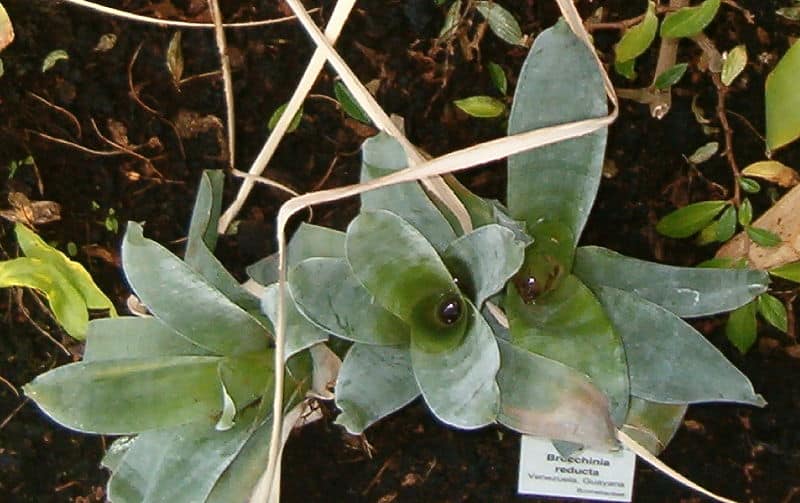
Native to the Tepui regions of South America, Brocchinia is a bromeliad that has adapted to a carnivorous lifestyle. Its leaves form a tight rosette that collects rainwater and traps insects, which are then digested by enzymes produced by symbiotic bacteria. This plant thrives in well-draining soil and requires high humidity and bright light. The Brocchinia’s dual role as both a bromeliad and a carnivorous plant makes it a fascinating addition to any collection. Collectors appreciate its unique adaptation and effective trapping method.
Catopsis (Catopsis berteroniana)
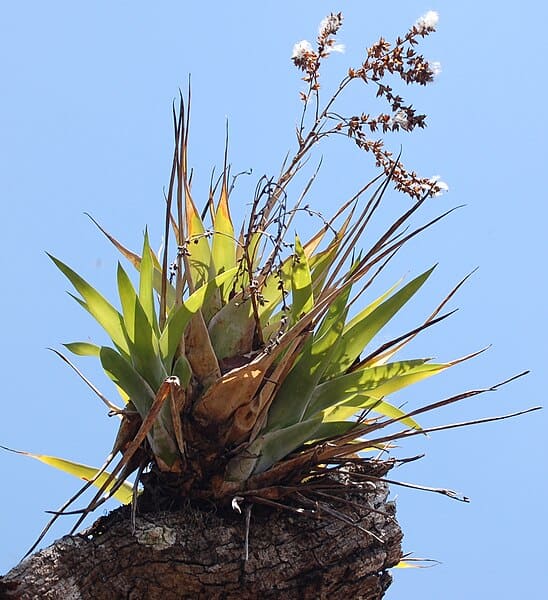
Catopsis is another bromeliad that has evolved to trap insects in its water-filled rosettes. Found in the rainforests of Central and South America, it thrives in humid, bright environments. The plant’s leaves are covered in a powdery substance that makes them slippery, causing insects to fall into the traps. Its ability to capture and digest prey through such a simple yet effective mechanism makes it a coveted species. Enthusiasts value Catopsis for its elegant form and efficient predatory capabilities.
This article originally appeared on Rarest.org.
More From Rarest.Org
Retro kitchenware offers a nostalgic charm that continues to captivate collectors. From vibrant mixing bowls to elegant dinnerware, these vintage pieces bring both function and flair to any kitchen. Read more.
Maserati has a legacy of creating some of the world’s most coveted cars. These cars aren’t just vehicles; they are symbols of luxury and performance. This list features some of the highest-priced Maseratis ever sold. Read more.
Exploring the world’s most exclusive marina residences offers a glimpse into luxury living at its finest. These residences are located in prime waterfront locations, providing unparalleled views and exceptional amenities. Read more.

